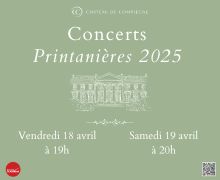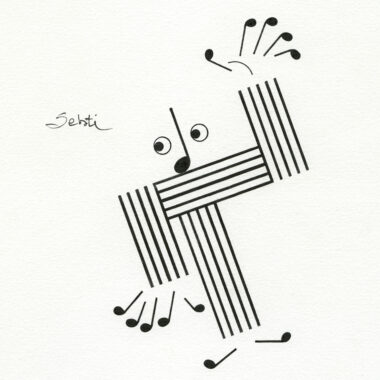Plus de détails
Montpellier. Opéra Berlioz/Le Corum. 02-XII-2012. Director and light designer: Urs Schönebaum; costume designer: Yashi Tabassomi. Mathis Nitschke (born in 1973) : Jetzt (World Premiere), opera in 7 scenes, libretto by Jonas Lüscher.With : Susan Narucki, Soprano I; Sarah Wolfson, Soprano 2; Martina Koppelstretter, Contralto; Gilles Ragon, Tenor; Marco Di Sapia, Baritone. Santiago Cimadevilla, electronic bandoneon; Mathis Mayr, electronic cello; Brice Soniano, electronic double bass. Elliott Carter (1908-2012): What Next?, chamber opera in one act and 38 scenes, libretto by Paul Griffiths. With: Susan Narucki, Mama; Sarah Wolfson, Rose; Martina Koppelstretter, Stella; Gilles Ragon, Zen; Marco Di Sapia, Harry or Larry; Josue Toubin-Perre, Kid; Montpellier National Opera Chorus (Chorus Master: Noëlle Geny), Montpellier National Orchestra; conductor: Carl Christian Bettendorf.
 When Jean-Paul Scarpitta decided to produce at the Corum of Montpellier the French premiere of What Next? by Elliott Carter, the only work by the American composer for the stage, and for only two performances, he could not guess he was about to give the best tribute to the American composer, who died on 5th November at 103 years old.
When Jean-Paul Scarpitta decided to produce at the Corum of Montpellier the French premiere of What Next? by Elliott Carter, the only work by the American composer for the stage, and for only two performances, he could not guess he was about to give the best tribute to the American composer, who died on 5th November at 103 years old.
The condensed format of this chamber opera (45 minutes) called for an additional piece as a first part : a commission by the Orchestra of the Montpellier Opera to Mathis Nitschke, a German composer who works in several different areas of art (concerts, cinema, theater, dance…) and for whom Jetzt (Now) is a kind of response to his elder. The piece was a teamwork, a three-headed conception, adding the energies of playwright Jonas Lücher and of director Urs Schönebaum to the one of the composer. The project is very ambitious : «Jetzt is aiming to describe the history of thought in a poetic fashion», according to the leaflet. The proceedings of the show per se brings questions with respect to this quote.
To what whas Carter’s intent (orchestra in the pit and solists on stage) Nitschke adds a choir, very much in demand, along with thee electronic instruments : bandoneon, cello and double bass, which add some hues to the slightly monolithic orchestral writing.
The seven periods of time chosen to deal with the evolution of language through history are here a pretext to the sampling of all genres — from the choir of nuns to pop songs and quotations from Wagner’s Parsifal — and to use all the technological possibilities of the stage — real-time projection, amplification, electroacoustic spatialization. Mathis Nitschke is in the audience, in control, in order to keep the balance right : «I want my music to be at the same time smart and entertaining», he says quite naively. The voice part of the five solists, who are not impersonating any characters here, is quite simple in a piece that looks more like a multimedia show than like an opera. The most clear and appealing part was undoubtedly the scenic conception of Urs Schönebaum who, using colors and light — a shading of grey and white on which stands out a huge blood-red stain — and a few elements of the set manages to be extremely imaginative in order to sculpt ever-moving spaces on the immense stage.
Urs Schönebaum, who was Bob Wilson’s (and Scarpitta’s) lighting assistant, was again involved in the much-expected opera What Next?, and was presenting tonight his first work as a director. In a simple and spare conception, one could see an inclined plane and a (anti-skid?) surfacing that was squeaking under the shoes, as a way of showing the boundaries of where the six characters of the story should perform.
Inconceivably enough — but being a proof, if needed, of the exceptional character of this outstanding musician, who completed last August what will have been his last score, the 12 courtes Epigrammes for piano — Elliott Carter is 90 years old when he tackles for the first time the opera genre. It was a commission of Daniel Barenboim for the Berlin Stattsopera, where the piece is premiered on 16th Sept. 1999, in a production by Nicholas Brieger. This less than one hour little gem, quintessence of the composer’s art, is showing 6 characters that are searching for… the other, dealing with a main interrogation in the Carterian thought (it is also at the core of his instrumental music) : that is to say the existential loneliness of being, and the inability to communicate. Written by Paul Griffith, musicologist and a critic at the New York times, the libretto comes from a scene in Jacques Tati’s Trafic, in which three women, two men and a child, caught in a car accident who apparently gave them amnesia, are confronted with each other in order to get their memory back, and to find back how bonds have been created between all of them. Their personalities are wonderfully well depicted : Mama is a mother «and much more than that», the only one who is a little down-to-earth — «we need help», she says repeatedly. Rose, a bride, is a diva intoxicated by the limelight, to whom the composer gives the best part; Stella, the astronomer, seems forever lost in galaxies; Zen, putative father, philosopher, follows only his own stream of thought; Harry or Larry, groom and clown, is oblivious to the point of having forgotten his own name; and Kid, the child, makes the «family» whole. But all attemps to create a dialogue or to join with the others will fail, each of them staying shut in their selfish behavior.
Carter shows a vocal writing of stupefying richness, giving only to Rose some arias of a voluptuousness remining of Berg’s Lulu. As in that piece, the orchestra — here much lighter : woods by two, a very present piano of percussions often solo — is mirroring very actively the vocal parts and weaves with them a dramaturgic matter always in relief, very colorful and chiselled : and difficult task for the Montpellier Orchestra, who, under the German conductor Carl Christian Bettendorf, sometimes lacks sharp lines and brilliance in the tones. The singers are of the best kind, but the American soprano Sarah Wolfson/Rose prevails by far, her performance possessing the exuberance, the color and the sensuality required for the part. Susan Narucki/Mama, also an American, is a reference and proves herself worthy; the tone of the German mezzo Martina Koppelstetter is singular and sophisticated, but sometimes lacks projection; Marco di Sapia/Larry, young Italian baritone, possesses the vocal elegance and the youth of the part, even though his tone is a tad monochromatic, as is Gilles Ragon/Zen’s, whose vibraton was sometimes slightly tedious. Very scarce, the young Josue Toubin-Pierre/Kid’s interventions take a very particular flavor.
The craftsmanship is pure wonder, condensed yet serving well the dramaturgy, spicing up the eloquence of the work and sparing its breath with a vim appropriate for the eternal youth of the most active of composers.
English translation : Romain Paulino
Photo : http://www.opera-orchestre-montpellier.fr/intervenants/urs-schonebaum
Plus de détails
Montpellier. Opéra Berlioz/Le Corum. 02-XII-2012. Director and light designer: Urs Schönebaum; costume designer: Yashi Tabassomi. Mathis Nitschke (born in 1973) : Jetzt (World Premiere), opera in 7 scenes, libretto by Jonas Lüscher.With : Susan Narucki, Soprano I; Sarah Wolfson, Soprano 2; Martina Koppelstretter, Contralto; Gilles Ragon, Tenor; Marco Di Sapia, Baritone. Santiago Cimadevilla, electronic bandoneon; Mathis Mayr, electronic cello; Brice Soniano, electronic double bass. Elliott Carter (1908-2012): What Next?, chamber opera in one act and 38 scenes, libretto by Paul Griffiths. With: Susan Narucki, Mama; Sarah Wolfson, Rose; Martina Koppelstretter, Stella; Gilles Ragon, Zen; Marco Di Sapia, Harry or Larry; Josue Toubin-Perre, Kid; Montpellier National Opera Chorus (Chorus Master: Noëlle Geny), Montpellier National Orchestra; conductor: Carl Christian Bettendorf.







